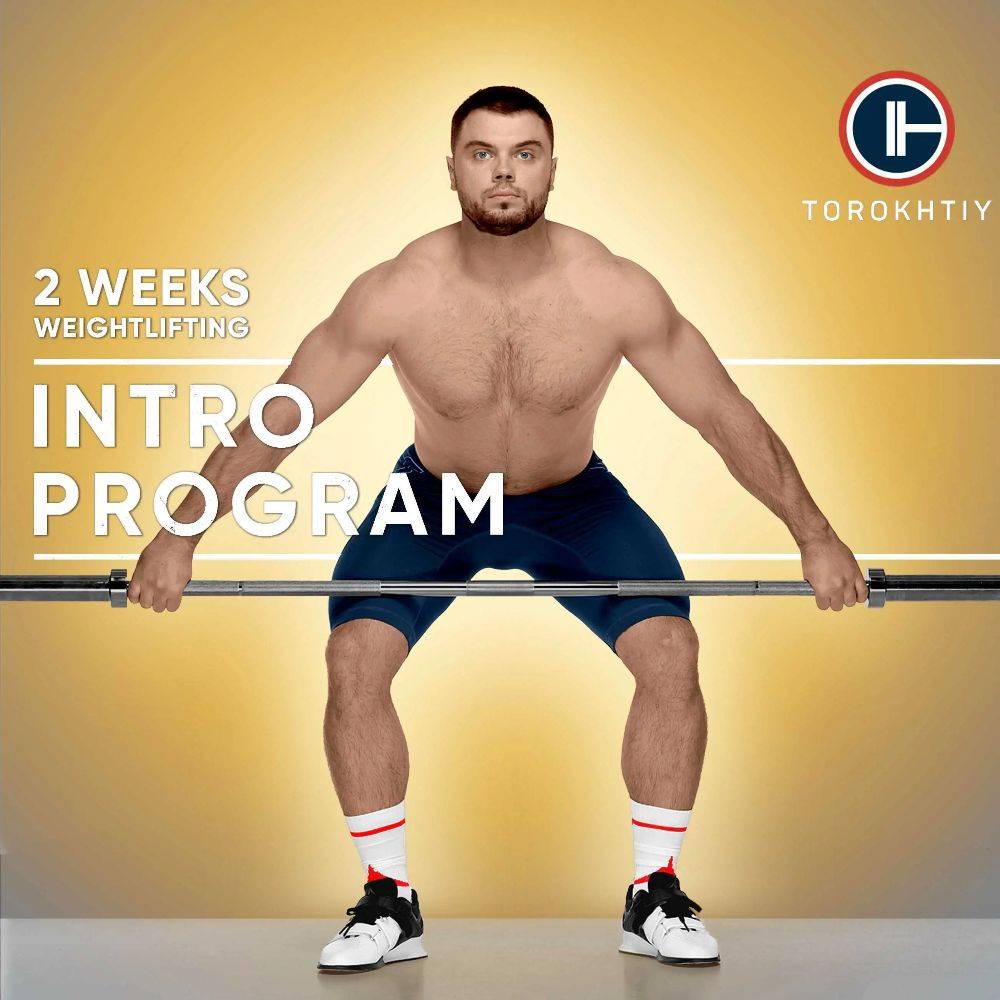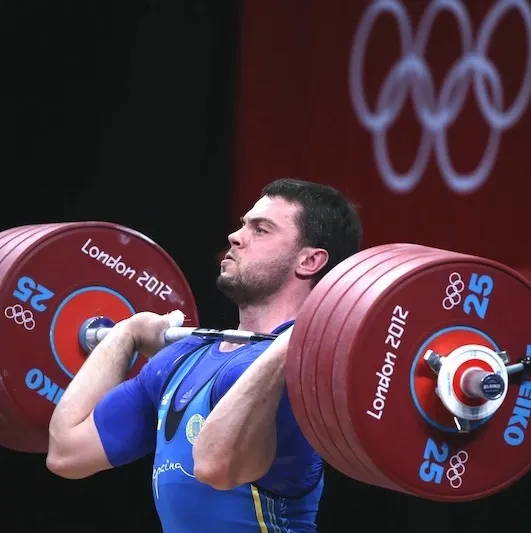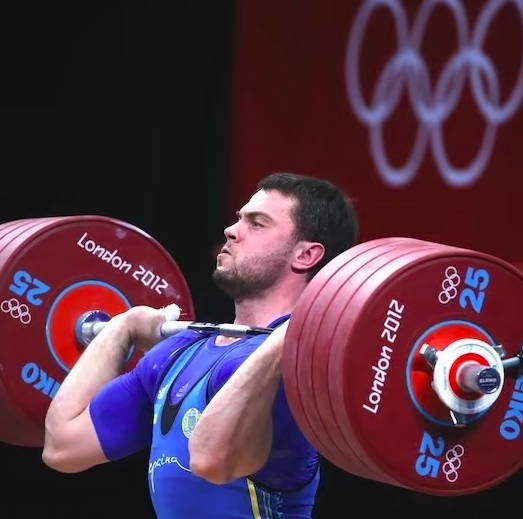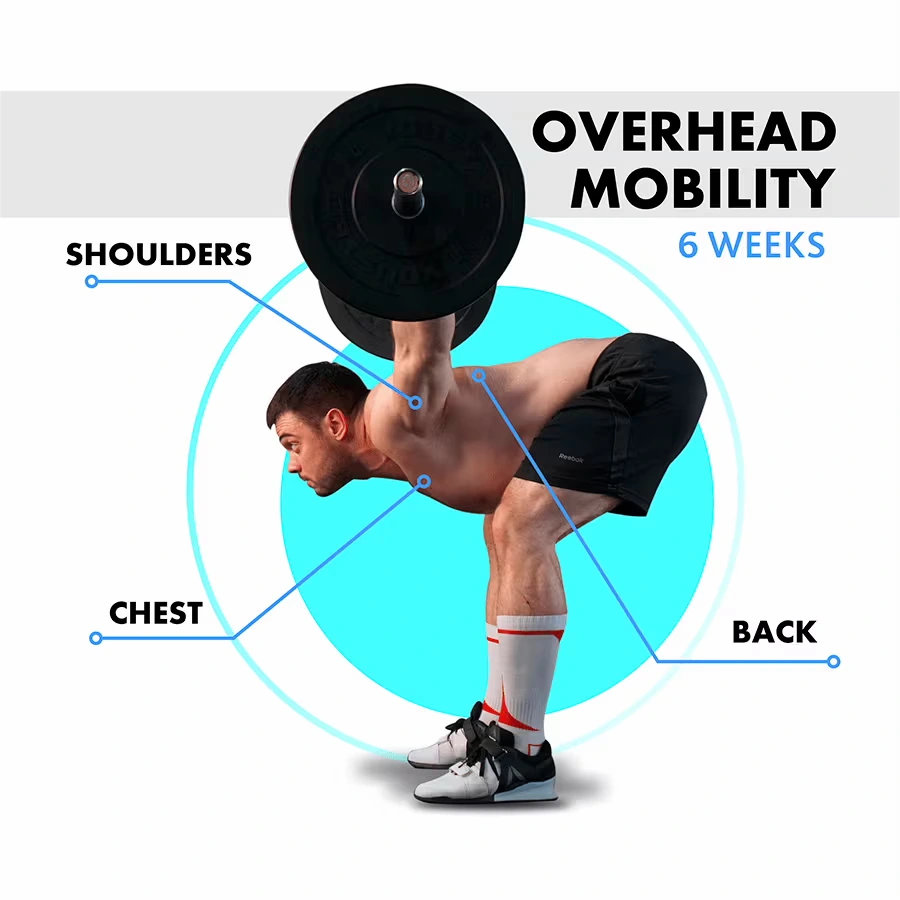When it comes to complex exercises, perhaps there’s no better one than the so-called overhead squat. With that said, unlike most exercises which are relatively easy to learn and perform (even as a beginner), the overhead barbell squat has a learning curve and is a lot more challenging.
That’s why in this article, we will be talking all about how to perform an overhead squat with proper form, and what are the most important benefits in performing this movement. Also, we will be discussing some alternative overhead squat exercises for beginners. Last but not least we will be showing you how you can start building strength the right way to perform this Olympic lift.
The overhead squat is the foundation of the snatch, the pinnacle of core training, and is unrivaled for creating powerful athletic performance. This practical jewel honed the essential component of sport movement: the effective transmission of energy from large to small body components.
Beside the benefits of improving your overall strength and performance the overhead squat develops great shoulder mobility and stability, overall flexibility and core strengthening correcting any muscle imbalances that you may have in your body.

Overhead Squat: General Description
The overhead squat is one exercise that truly targets your entire body – from your shoulders and back to your core and the entire lower body. When performed with proper technique, it can enable you to increase your strength and work on your mobility and flexibility so that you can do other exercises better.

With that said, the overhead squat is an Olympic lift that’s not always suitable for complete beginners. The biggest challenge with it is that it often highlights all sorts of mobility weaknesses and stability limitations that you might have, especially related to thoracic spine, shoulder, ankle and hips.

That’s why it’s almost impossible for some people to perform this exercise with proper form, even more so when they haven’t learned the proper overhead squat technique.
Having said that, even though it’s difficult and challenging, the overhead squat is one exercise you should be doing. If you’re a beginner, you can start with overhead squat progression until you train yourself to the point where you can do the actual exercise with no issues
Boost Your Overhead Mobility!
Pro or beginner, our Overhead Mobility Program is your key to success.
Why Choose?`
🏋️ Master Olympic weightlifting, from beginner to pro.
💪 Boost upper body mobility and joint strength.
🚀 Solidify your confidence in overhead movements.
🥇 Achieve new personal bests.
🎯 Benefit from 60+ unique exercises.
📈 5 tests to track your progress.
⏰ 18 efficient 30-minute workouts.
📹 120 video guides.
🔒 Lifetime access for success anytime, anywhere.
Don’t wait – unlock your potential today! 🚀
3 Benefits of Overhead Squat
One of the best things about the overhead squat is that it helps you find the weaknesses you have in your body. It shows you where you lack mobility or strength and hints at what you need to work on. But that’s just one of many benefits of performing this complex exercise. Other ones include.
✅ Increased Strength
✅ Improves Balance
✅ Maximizes Your Core Strength

Overhead Squat Technique
As already mentioned, the overhead squat is a complex exercise, and when it comes to doing it with the proper technique, there are various things you need to keep in mind. For that reason, we’ve outlined our three most crucial tips for overhead squatting like a pro.
Follow us!
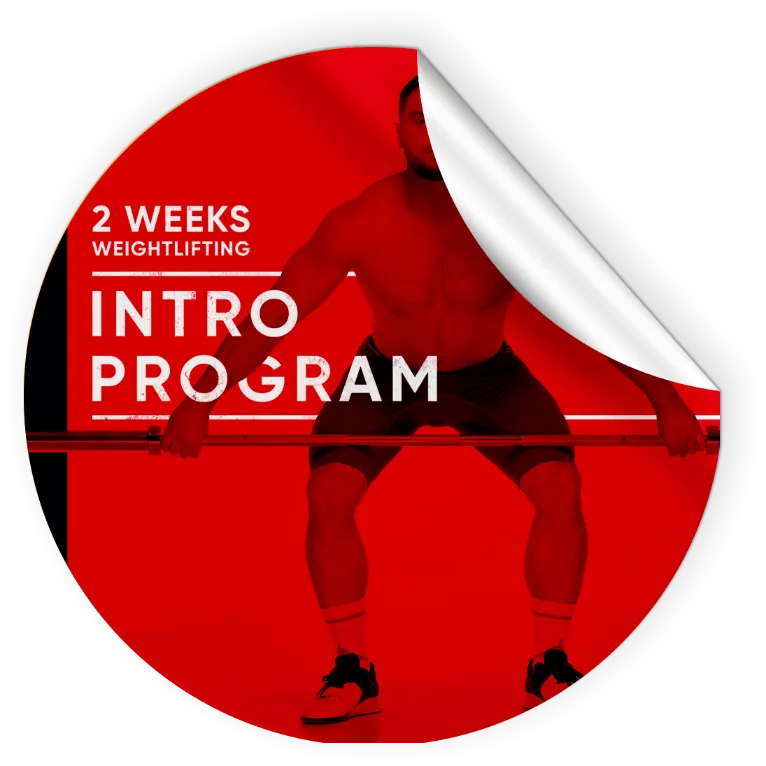
FREE

FREE
Get a 2-week Weightlifting Program as a bonus for the subscription to kickstart your training plan!
1. Watch Your Squat Positioning
2. Be Mindful of Your Grip
3. Maintain Active Shoulders

Overhead Squat Progression: Guide for Beginners
Most beginners aren’t able to do an overhead squat on the first try. And that’s normal since it’s a complex Olympic weightlifting exercise that requires some getting used to. However, that’s also the reason why we have an overhead squat progression made specifically for beginners so that they can work up to a physical level where they can perform the actual exercise. Let’s take a look at how that happens.
Step 1: Bodyweight Squats
This exercise will help you see whether you’re mobile enough in the upper body and whether you need to work on its mobility before adding weight. This variation of the exercise is more complex than the simple air squat, because it requires you to keep your back extended throughout the entire range of motion.
Step 2: Snatch Grip Behind the Neck Press
Step 3: Banded Overhead Squat
Step 4: Snatch Grip Bottom Press
Step 5: Barbell Overhead Squat
Overhead Squat Alternative
For some people, the overhead squat remains quite a taxing and challenging exercise. Others are not able to perform it and enjoy the benefits it brings due to past injuries or present mobility issues.
Thankfully, some overhead squat variations are specifically designed to give some of the benefits from the exercise while putting less or different kinds of pressure on the joints, tendons, and muscles.
1. Dumbbell Overhead Squat
There are two ways to do this exercise – either with one dumbbell or with two dumbbells, one in each hand. And there’s quite a difference between the two variations.
If you’re struggling with your shoulder mobility in the overhead squat, then you can try doing them with only one dumbbell. For most people, keeping one dumbbell in an overhead position is significantly easier than a bar. On the other hand, doing the overhead squat with two dumbbells can be even more challenging than doing the exercise with a barbell.
This is mainly because the bar allows you to grip as wide as you need, depending on the mobility of your shoulder. But with dumbbells, you need to keep them directly over the shoulder, as allowing them to go wide will make it impossible to hold overhead.
Nonetheless, this variation of the exercise adds some flair to it, and it’s a nice way to train the same muscle groups but with a slightly different movement.
2. Barbell Overhead Lunge
This exercise is super cool because it can be used as both an alternative to the overhead squat and also as a progression toward doing that movement. It requires you to lunge while holding the barbell overhead, and for people with mobility issues in the lower body (ankle, hip, or knee) it’s a lot more forgiving.
It’s a great exercise for people that are already advanced in the gym and have good upper body mobility and enough strength in the lower one but lack the mobility to squat with depth. We recommend alternating between overhead squats with a PVC pipe and this exercise if the goal is to improve lower body mobility.
3. Goblet Squat
This is a beginner-friendly variation of the exercise, which is great for developing lower body strength and learning the right squat position. It’s good for figuring out whether you have any issues with mobility in the hips, ankles, or knees, and it’s a terrific starting point for people who have never done strength training before.
Over time as you start to progress, it’s a good idea to add weight by using heavier kettlebells, as that will allow you to become more resilient and will build the kind of muscles you need to progress in your lifting journey.
FAQ
Why is Overhead Squat so Hard?
The overhead squat is challenging because it requires you to have great strength, mobility and stability in both the upper and lower body to do it correctly. It’s a full-body Olympic lift that’s mainly done by athletes who are not novice and have the proper understanding and mechanics to do it the right way.
Even for them, it remains challenging because it not only requires you to be strong and mobile but also challenges your stabilization and balance.
Is an Overhead Squat Better Than a Back Squat?
It’s not better or worse; it’s just a difference. Due to its movement carryover to the snatch, the overhead squat is frequently performed by Olympic weightlifters. With the back squat, you’re primarily challenging the muscles in your lower body and core, and so it requires you to be mobile and strong only in the ankle, hip, and knee joints.
On the other hand, the overhead squat is a full-body exercise that challenges your shoulders, back, and core, along with your entire lower body. Both movements are great and have their rightful place in an exercise program, but they ultimately serve a different purpose.
Can Everyone Do an Overhead Squat?
Everyone can learn to do an overhead squat if they’re willing to put the work in. And if they don’t have any injuries that have led to mobility issues. The overhead squat is a slightly more challenging exercise, and it’s typically tough not only for beginners, but also for advanced athletes.
However, if you do all the progression work correctly and you slowly build the required mobility and strength, you will surely be able to perform an overhead squat.
Conclusion
The overhead squat is a challenging but extremely beneficial exercise when performed right. This movement benefits most athletes on maximizing strength, power and body awareness, as it helps build strength while also working on stability, balance, and mobility. It’s an Olympic lift that is not always suitable for beginners.
But thankfully, there are many variations of this exercise that can help you prepare for doing the actual movement, and working on doing so will help you become a better overall athlete. Having said that, we would like to ask you for your opinion. Do you do the overhead squat? Was it hard to progress to it? Do you find it beneficial for your training? Let us know in the comments.
References:
- The Overhead Squat: What Is It Good For? // Bodybuilding: https://www.bodybuilding.com/content/the-overhead-squat-what-is-it-good-for.html
- Designing a Strength Program: Importance of Core Stability // BridgeAthletic: https://blog.bridgeathletic.com/designing-strength-program-importance-of-core-stability
- How to Do an Overhead Squat: Proper Form, Variations, and Common Mistakes // Very Well Fit: https://www.verywellfit.com/how-to-do-an-overhead-squat-4685854
- Shoulder Position for the Overhead Squat // JTSstrength: https://www.jtsstrength.com/shoulder-position-for-the-overhead-squat/
- All Photos made by Torokhtiy Media Team.
Why Trust Us?
The product testing process is described in more detail here.
Experience: 21 years
Best Results: Snatch – 200 kg,
C&J - 240 kg
My name is Oleksiy Torokhtiy. I am a professional athlete with 20 years of experience in Olympic weightlifting. I have won multiple European, and World titles and have taken part in two Olympic Games (Beijing 2008, London 2012).
After finishing my career, I have committed myself to coach, and as of 2022, I’ve hosted 200+ weightlifting seminars all over the globe. I’m the founder of an international sportswear and accessories brand, Warm Body Cold Mind (my motto), author, and creator of a series of training programs and eBooks.
If you have any questions/suggestions/any other inquiry, you can reach out to us via email - reviews@torokhtiy.com

